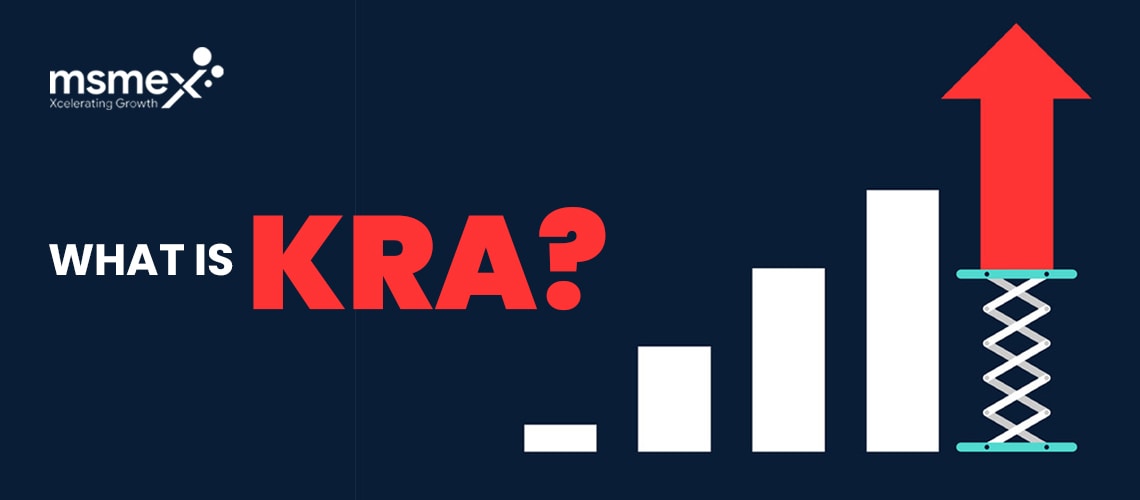KRAs help employees understand their role in the organization and what is expected of them in their capacity as a manager, HR, or audit assistant. Regardless of the profile, every job in an organization has a predefined KRA that helps employees perform better and understand their role in a company.
If you wish to understand everything there is about KRA, read the article below as it explains extensively the nuances of creating an effective KRA, and the parameters it entails.
What is KRA?
KRA is a popular acronym for Key Responsibility Areas that highlights the job responsibilities an employee is expected to handle. You could consider it a job description outlining the key responsibility areas delegated to the person by the organization.
For instance, a telecaller must call a specific number of people from the company’s database in a day. Apart from this, they must also handle any additional responsibilities assigned to the person by the company. As a result, their performance will be judged based upon how perfectly they carried out their job based on the key responsibility areas they were supposed to focus on.
Similarly, the key responsibility area for HR (Human Resource) will be scouting and recruiting talented individuals while training them once they clear the interview. Apart from this, HR is also responsible for employee appraisals, processing leaves, and maintaining the organization’s overall efficiency.
You could consider KRA as a crucial factor in performance management since it gives a realistic background against what the employee has achieved until now and evaluates their job efficiency.
Learn more about – 5 Proven Techniques of Performance Management System for Early-stage Companies
Key Parameters Responsible for Assigning KRAs
There are a few key parameters that companies should keep in mind while assigning key responsibility areas to their employees. The job description and responsibilities an employee is supposed to handle must be gauged realistically while also allowing room for innovation.
Here are a few aspects that an organization’s management must consider while defining KRAs to employees:
1. Communicate Proactively
Talk to your employees before setting anything in stone. Discuss with your employees what needs to be added to the KRA and what responsibilities they can handle. An employee should be clear as to what they need to work upon in an organization to contribute to the organization’s overall productivity more efficiently. It would be more appropriate if you let the employees decide their KRAs.
As a result, they would not only take an active interest in their job profile but will also become emotionally connected to the organization. Once you let an employee decide the work they want to do, you are mitigating any future complications that may arise regarding their workload. It will also motivate them to strive for more and work harder while delivering more than one hundred percent.
2. Understand the Educational Qualifications
Evaluate the candidate’s educational qualification, background, former experience, skillset, and interest before assigning key responsibility areas. You can get all this information from an individual’s resume. However, once you read through it, decide what profile will best suit them and then outline the key responsibility areas they would need to work upon. One more thing to consider is never assigning KRAs over the phone (you must prefer doing it in person).
If the employee is experienced, it is always better to sit with them and understand what they used to do with their former organization and what areas they specialized in and handled effortlessly. Assigning an employee with something they are comfortable with or something along the lines will benefit your organization in the long run while also guaranteeing productivity and quality deliverables.
Every human resource manager needs to understand what the candidate is best at and outline their work responsibilities in the organization accordingly. Recognizing their strong points and acknowledging them by adding something related to it in their KRAs will give them the necessary confidence to do better at your organization. Nonetheless, nobody responds politely to work that has been imposed on them. Let them willingly accept their key responsibility areas and allow them the flexibility to work effectively.
3. Willingly Accepting their Role
Ensure that the employees understand and accept their role willingly. It is the management’s job to keep everyone happy, and a tiny part of that responsibility includes ensuring everyone is doing their work with a smile. An employee’s acceptance of key responsibility areas will go a long way and help them do better at your company. However, you must understand that verbal communication holds no authenticity and legality in today’s world.
Therefore, guarantee that everything you are discussing with an employee, including the key responsibility areas they are supposed to handle once they begin their contract term, is entirely documented. Also, ensure that you send a copy of this to the employee so that they know what the management expects from them and who they are supposed to report. These copies must be duly signed by both parties to avoid any future complications or conflicts.
Learn more about – What is KPI & KRA? How Setting Right KPI & KRA Can Help Measure Team Performance?
Qualities of an Effective KRA
Key Responsibility Areas will differ widely since they vary based on an individual’s role in the company. However, the key to defining a good KRA is making it clear, specific, realistic, and measurable. Several organizations are writing something too meaningful under the KRA. However, in terms of success, it confuses an employee since they have no clear idea of what it will look like. Therefore, pinning down exact responsibility areas will help an employee perform better and be productive at the same time.
Please discuss the employee’s educational qualifications, skill set, and interest before dedication anything. It is essential that your employee feels fulfilled while working and enjoys what he is doing. Assigning a responsibility that is polar opposite to what they have been doing before will only impede efficiency and quality deliverables. Apart from this, another characteristic of a good KRA includes an activity that is essential for the working of an organization in addition to being interdepartmental to avoid hierarchical delays.
Challenges in implementing KRAs
One of the biggest challenges in implementing KRAs is setting realistic and achievable goals. Organizations need to take into account factors such as market conditions, employee capabilities, and available resources when setting KRAs. If the goals are too ambitious or unattainable, employees may become demotivated or lose confidence in the process.
To ensure that KRAs are effective, it’s important to align them with employees’ skillsets and experience levels. This helps employees see the relevance of the KRAs and motivates them to achieve the goals. Communicating KRAs clearly is also essential for employee understanding and motivation.
Here are some other challenges organizations may face in implementing KRAs:
- KRAs need to be tracked and measured effectively to ensure accurate progress tracking. If progress is not measured accurately, it can be difficult to assess the effectiveness of the KRAs.
- Measuring progress can be a challenge if metrics are not clearly defined or there is insufficient data. Organizations need to ensure that metrics are clearly defined and that employees have access to the necessary data.
- Resistance to change can also be a challenge when implementing KRAs. Employees may feel that KRAs are unnecessary or intrusive. Effective communication and addressing concerns is necessary to address resistance to change.
- There may be a lack of buy-in from management or other key stakeholders, which can lead to a lack of support for the KRA process.
- There may be a lack of training or resources available to effectively implement the KRAs.
- Lastly, implementing KRAs requires ongoing monitoring and support to ensure that the process remains effective and relevant.
Despite the challenges, implementing KRAs can improve performance management and help employees work towards achieving organizational goals. Organizations can successfully implement KRAs by setting achievable goals, communicating effectively, measuring progress accurately, and addressing resistance to change.
Related Read About –
- Everything You Need To Know About KPIs – Importance & Different Types Of KPIs
- Fast-track your Business Set-Up with Free Business Templates
- 3 Biggest Changes In Labour Laws Which Every Entrepreneur Should Be Aware Of
- What Is Employee Stock Option Plan? 4 Types Of ESOPs, Benefits & Its Process In Private Companies
- Business Lessons Founders & Small Business Owners Learned Amid COVID-19 Pandemic
- How To Become An Entrepreneur And Start Your Business? Explore The Step By Step Process







